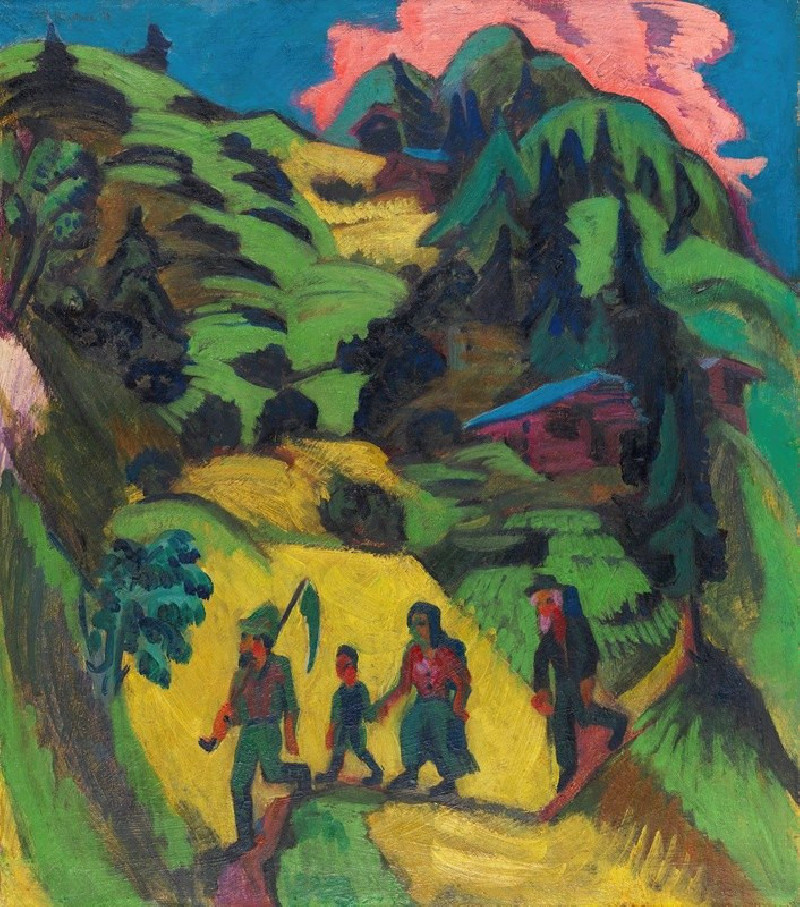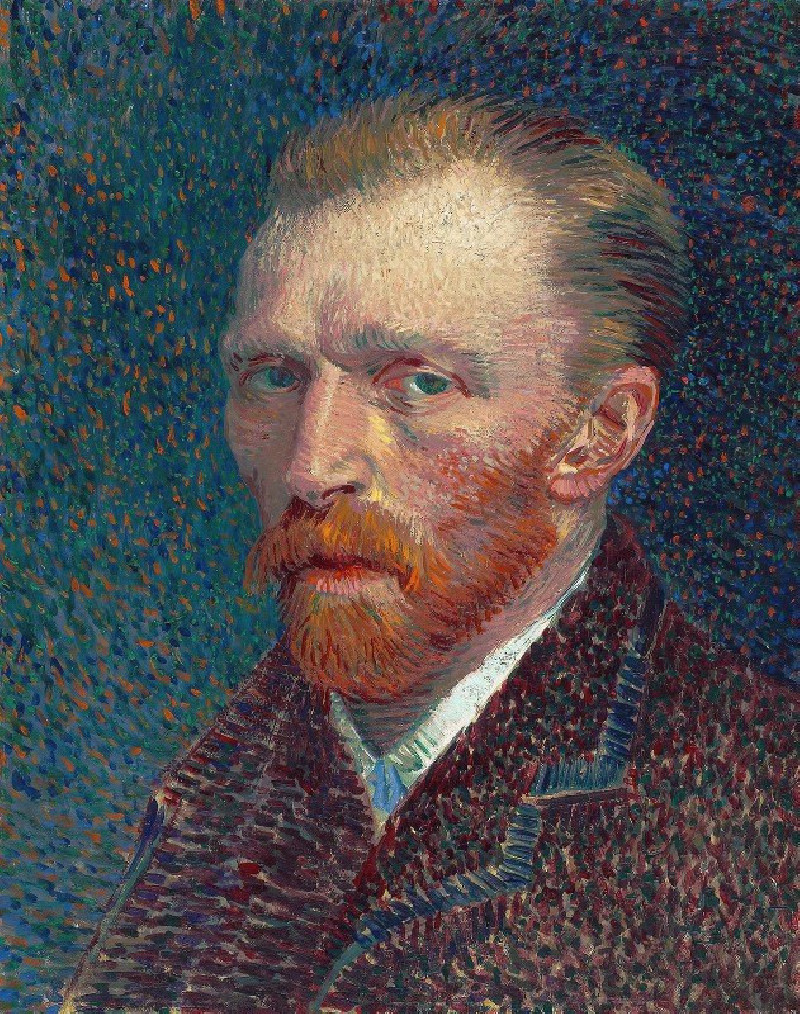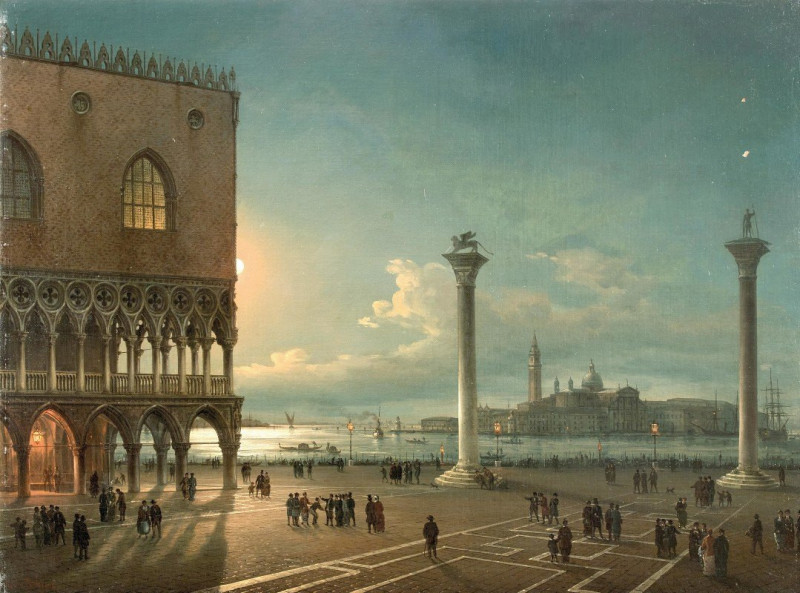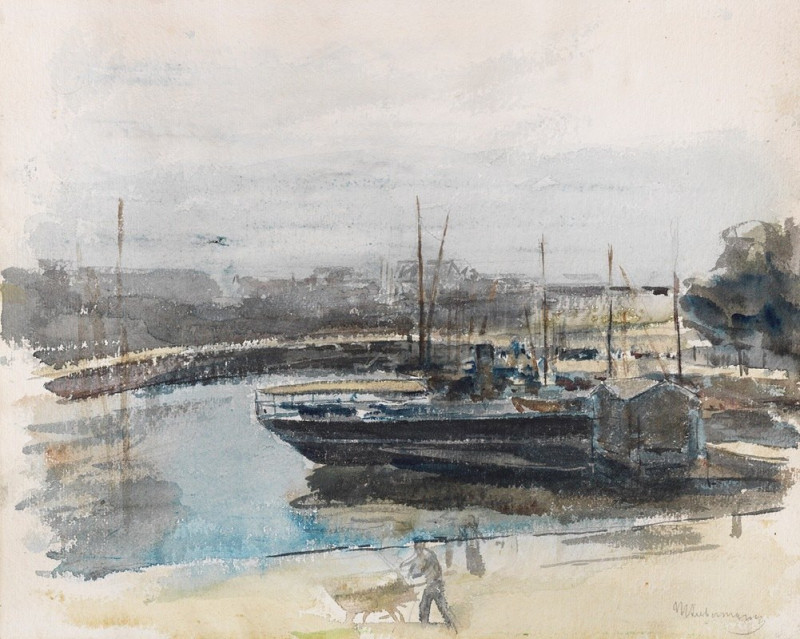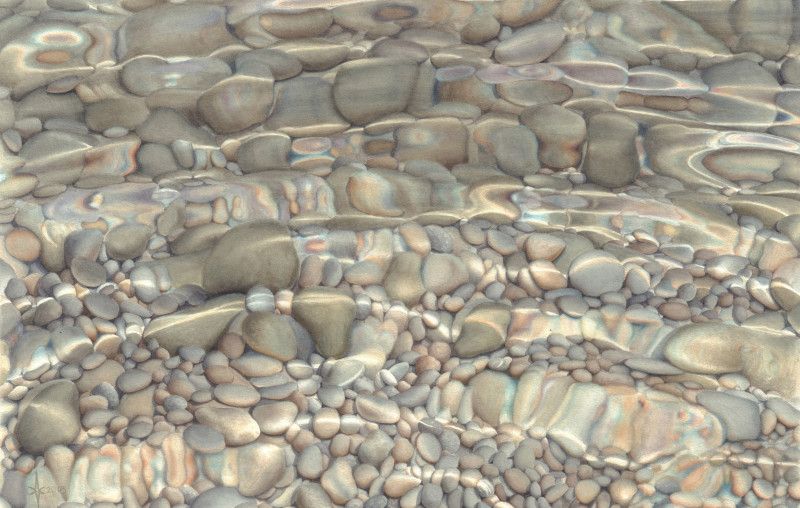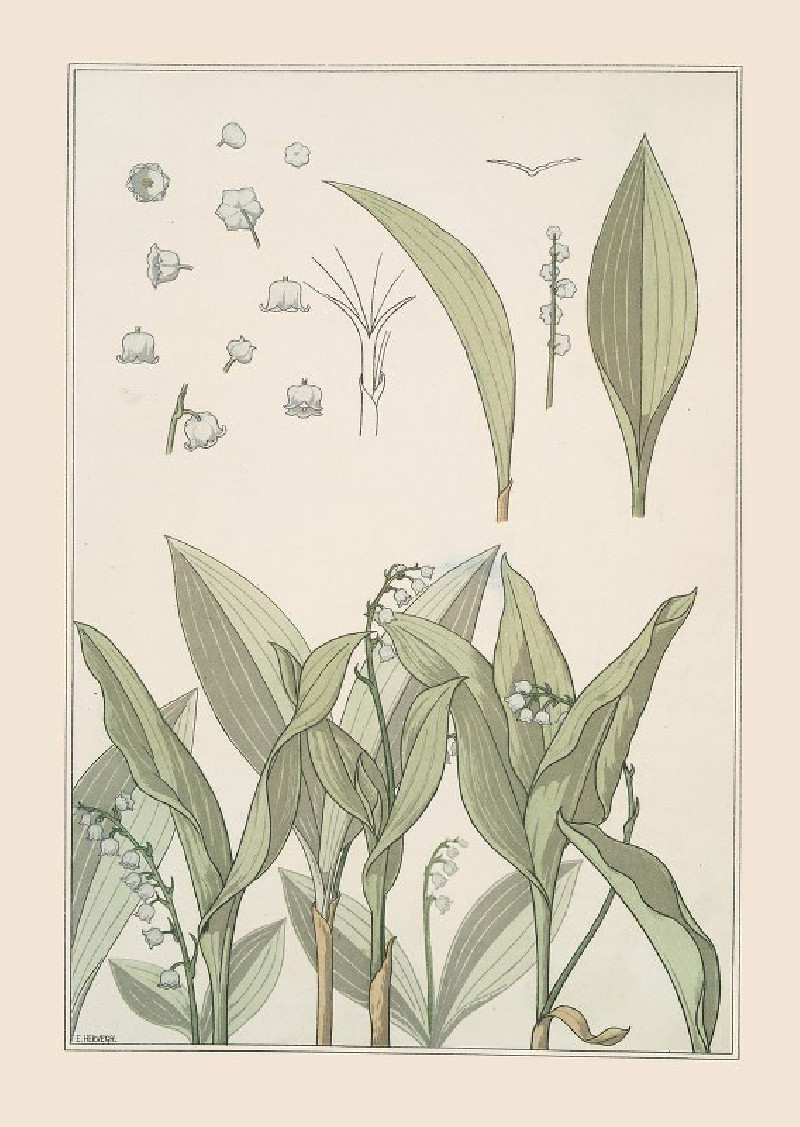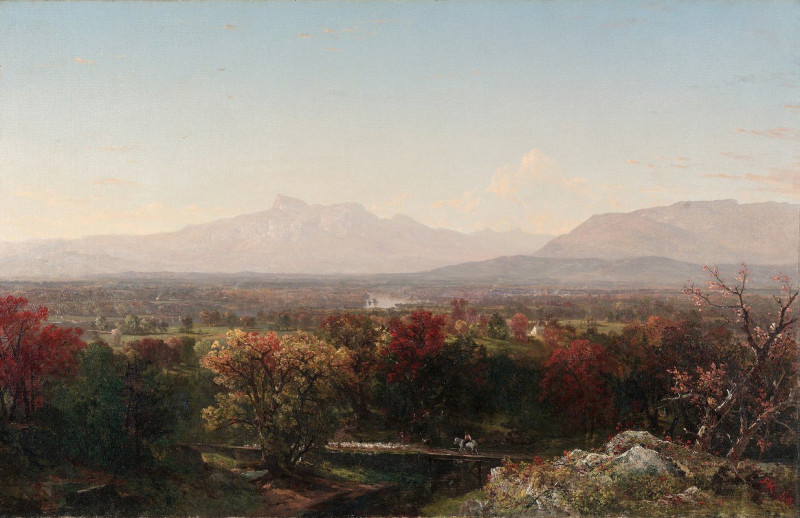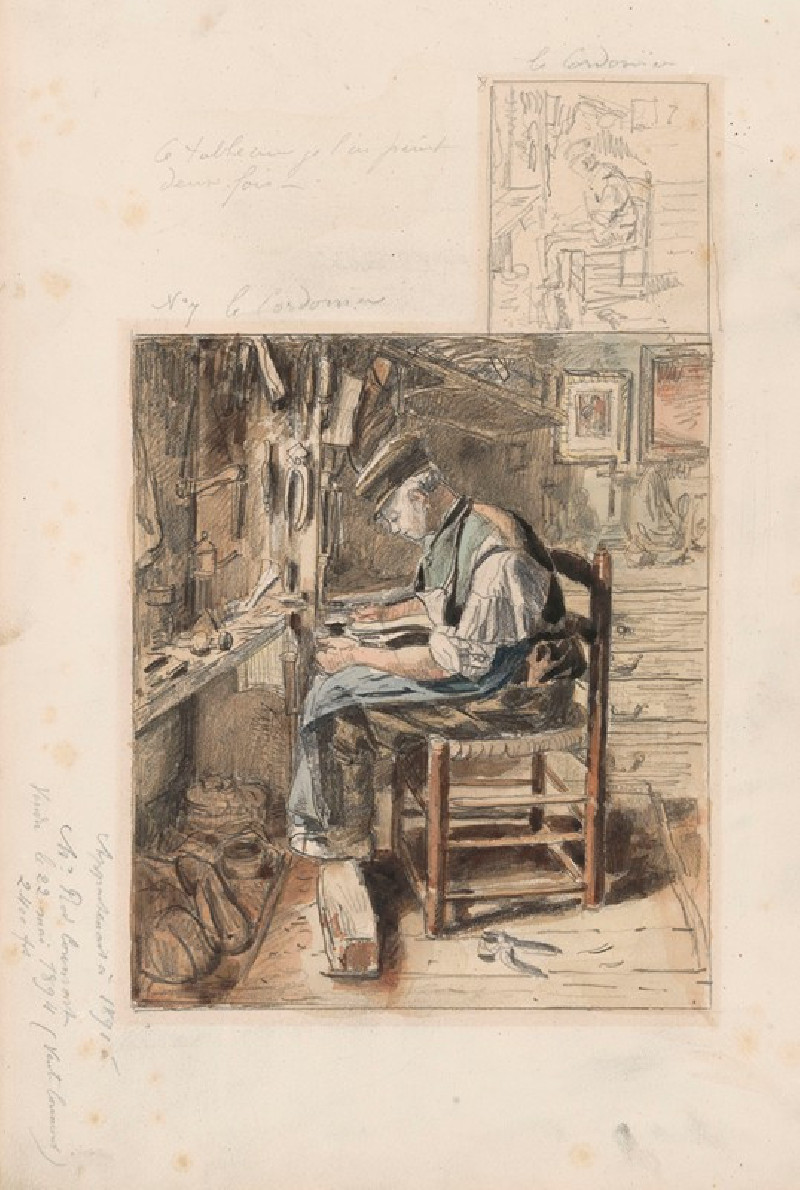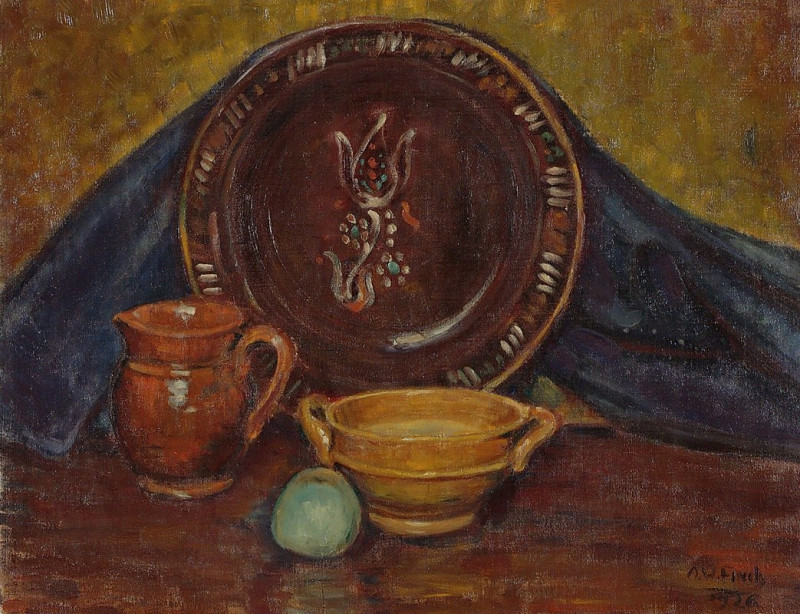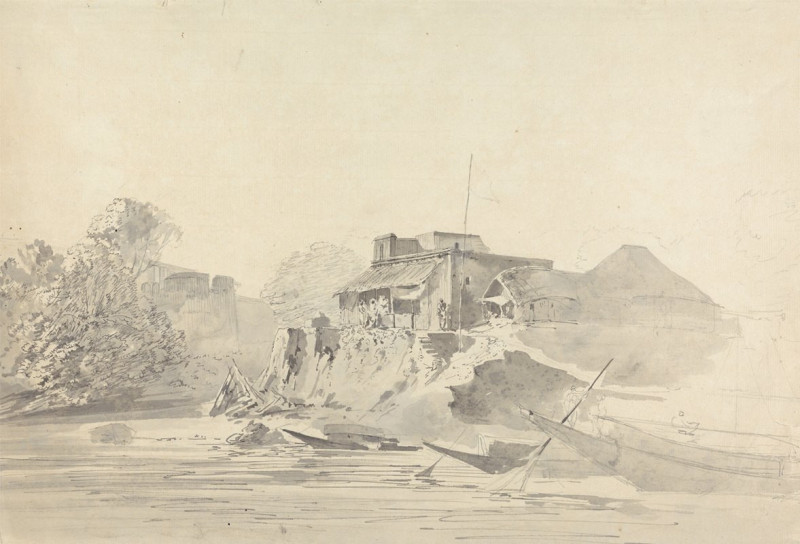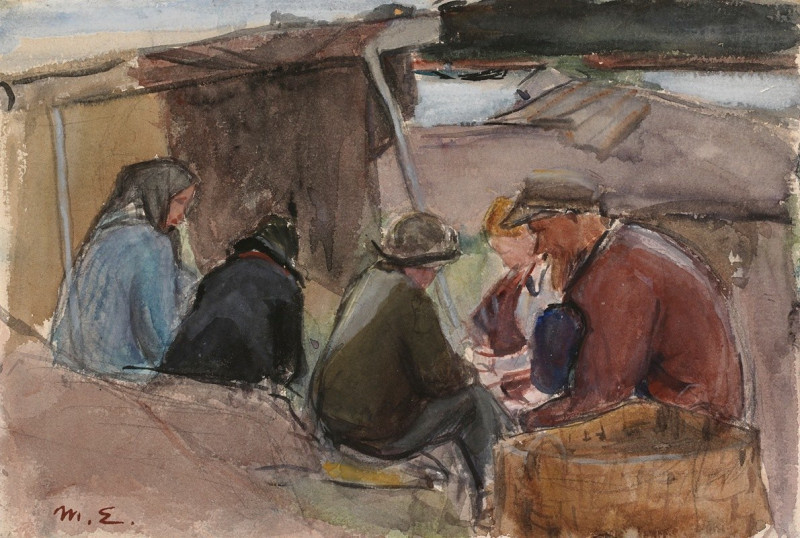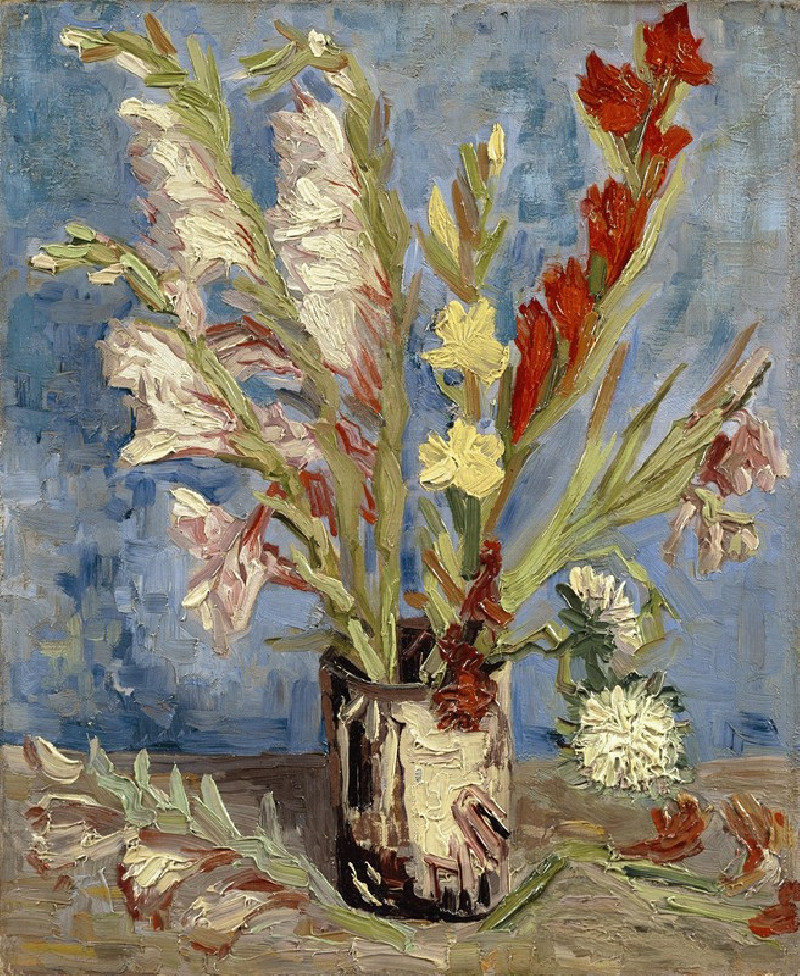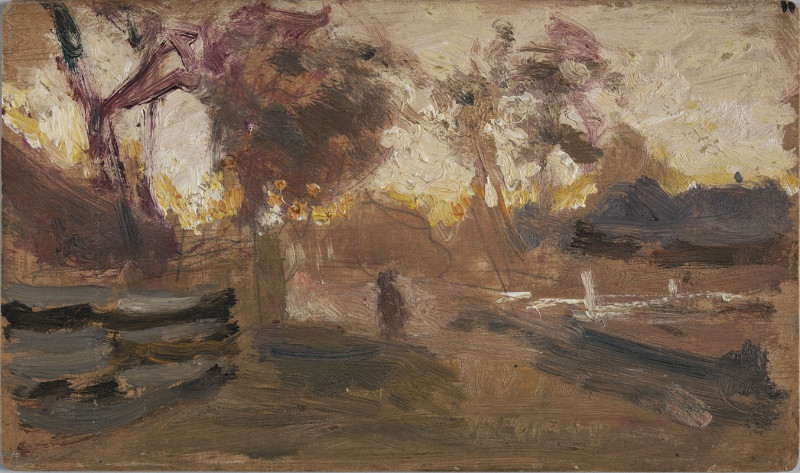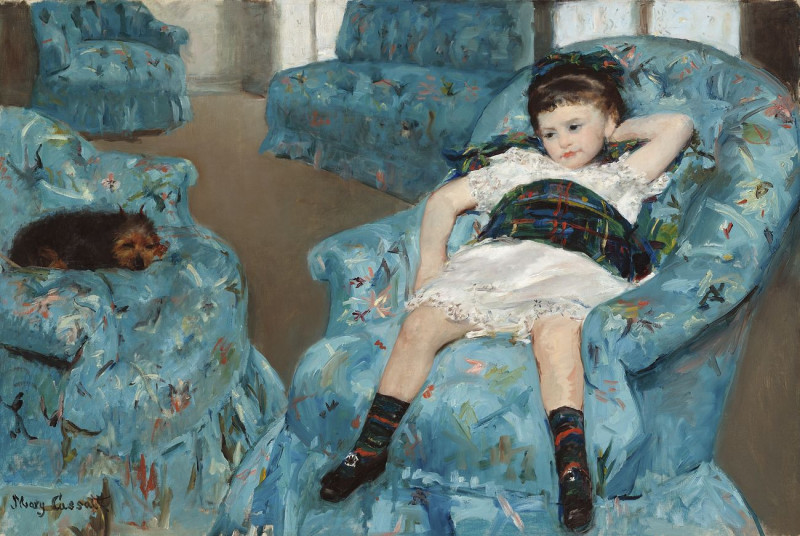Heimkehrender Heuer (1918)
Technique: Giclée quality print
Recommended by our customers
More about this artwork
"" by Ernst Ludwig KirchnerImmerse yourself in the vibrant brushstrokes and electrifying colors of Ernst Ludwig Kirchner's 1918 masterpiece, "Heimkehrender Heuer," a stunning representation of expressionism. Kirchner, a pioneer of the German Expressionist movement, captures a scene filled with dynamic motion and emotional intensity, reflective of the turmoil and vitality of the early 20th century.This painting depicts a group of figures descending along a winding path through a vividly colorful landscape. The rolling hills are rendered in varying shades of green, juxtaposed with the rich blues and deep purples of the distant mountains. Dominated by a sense of movement, each figure in the procession appears mid-stride, enhancing the painting’s overall rhythm and flow. Their faces, sketched with quick, bold strokes, mirror the rustic and untamed nature of the environment.Adding to the dramatic contrast, the sky behind is painted with a burst of warm hues, signaling the end of the day, and casting a surreal glow that further animates the scene. The rustic cottage nestled amidst the trees to the right harmonizes with the undulating landscape, its saturated red and blue tones standing out against the predominantly green background."" is not just a moment captured in time, but a vivid, emotional expression through color and form, reflecting Kirchner's introspective yet bold approach to art.
Delivery
Returns
Ernst Ludwig Kirchner (1880–1938) was one of the most important German Expressionist painters. He was a co-founder of Die Brücke, a group of German expressionist artists formed in Dresden in 1905. Die Brücke and Kirchner took inspiration from Vincent Van Gogh and Edvard Munch, as well as African and Oceanic art. They used woodblock printing as a medium to showcase their signature style: flat, unrealistic images with vivid colors. The recurring themes in Kirchner's artworks included exotic cultures, faraway landscapes, self-portraits, dancers and Berlin street life. His paintings and prints effectively portrayed non-European cultures despite the fact that he never traveled outside of Europe.

